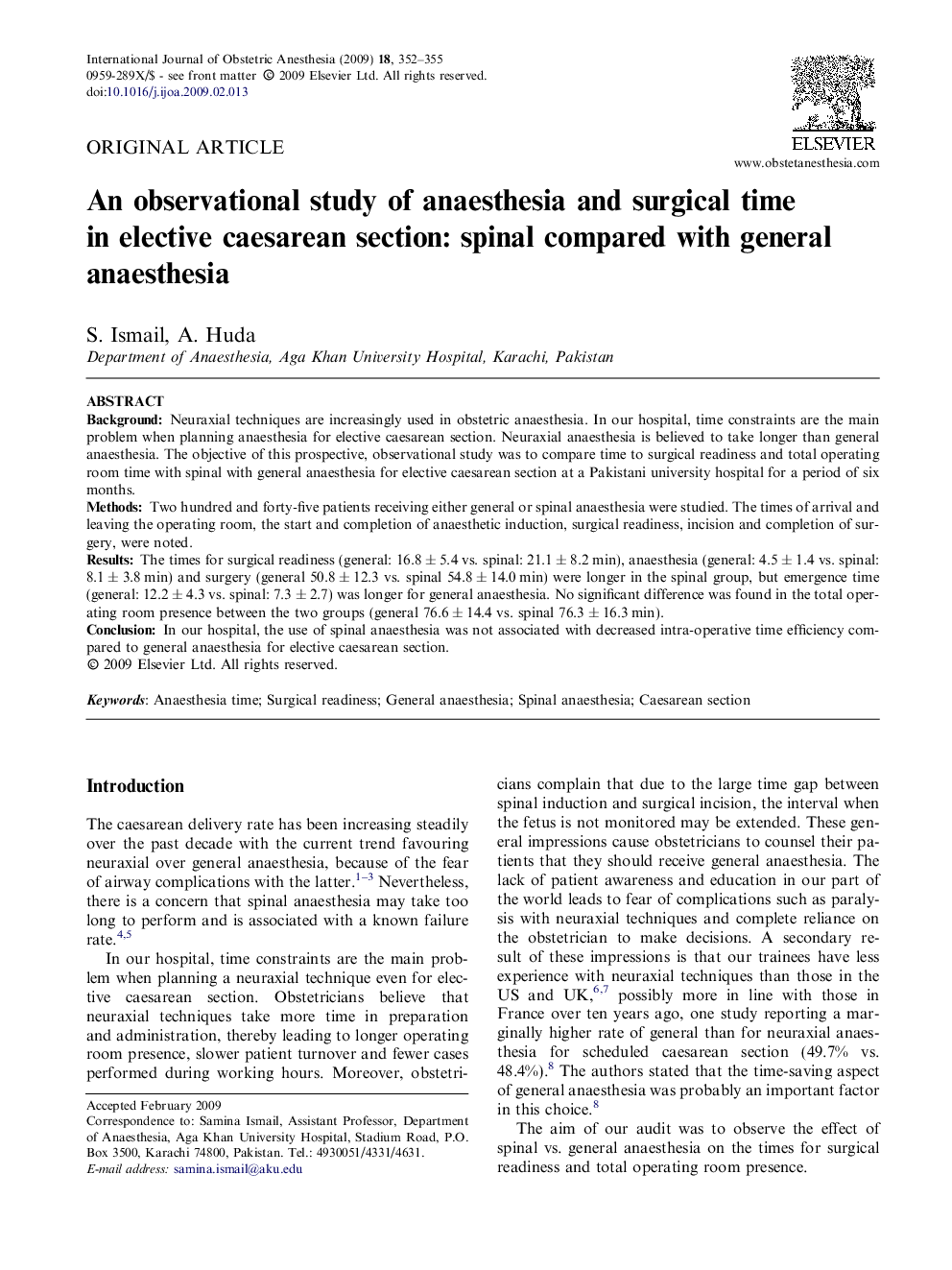| Article ID | Journal | Published Year | Pages | File Type |
|---|---|---|---|---|
| 2757953 | International Journal of Obstetric Anesthesia | 2009 | 4 Pages |
BackgroundNeuraxial techniques are increasingly used in obstetric anaesthesia. In our hospital, time constraints are the main problem when planning anaesthesia for elective caesarean section. Neuraxial anaesthesia is believed to take longer than general anaesthesia. The objective of this prospective, observational study was to compare time to surgical readiness and total operating room time with spinal with general anaesthesia for elective caesarean section at a Pakistani university hospital for a period of six months.MethodsTwo hundred and forty-five patients receiving either general or spinal anaesthesia were studied. The times of arrival and leaving the operating room, the start and completion of anaesthetic induction, surgical readiness, incision and completion of surgery, were noted.ResultsThe times for surgical readiness (general: 16.8 ± 5.4 vs. spinal: 21.1 ± 8.2 min), anaesthesia (general: 4.5 ± 1.4 vs. spinal: 8.1 ± 3.8 min) and surgery (general 50.8 ± 12.3 vs. spinal 54.8 ± 14.0 min) were longer in the spinal group, but emergence time (general: 12.2 ± 4.3 vs. spinal: 7.3 ± 2.7) was longer for general anaesthesia. No significant difference was found in the total operating room presence between the two groups (general 76.6 ± 14.4 vs. spinal 76.3 ± 16.3 min).ConclusionIn our hospital, the use of spinal anaesthesia was not associated with decreased intra-operative time efficiency compared to general anaesthesia for elective caesarean section.
